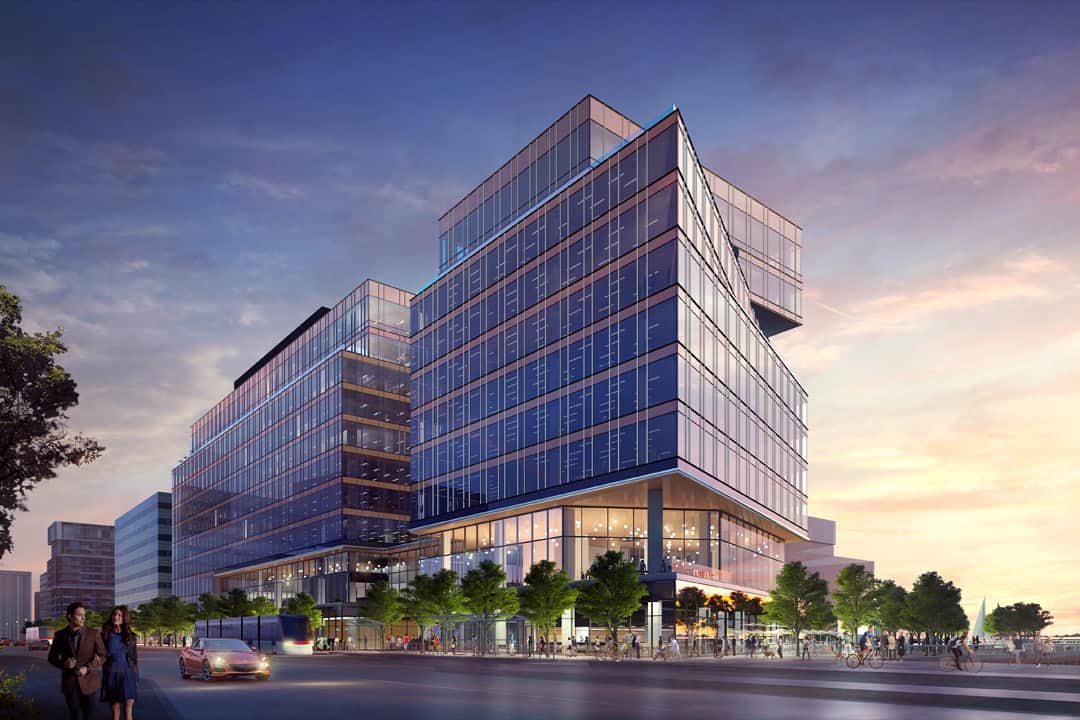U of T has partnered with startup and research incubator MaRS to lease 24,000 square feet of the 400,000-square-foot Waterfront Innovation Centre (WIC), which is currently under construction. The leased space will allow U of T and MaRS to provide startups with office space to further the development of their businesses.
“I fully expect students from U of T will migrate to Waterfront, if that makes sense for them,” said Scott Mabury, U of T’s Vice-President of University Operations. “Given the breadth and diversity of ideas that are happening at the university, the diversity of innovation and discoveries that happen, I expect a quite broad and diverse set of occupants.”
The WIC is set to be constructed on Queen’s Quay East near Sugar Beach and is expected to open by 2021. According to Mabury, the lease is set to be finalized “any day now.”
The lease marks the second time that U of T and MaRS have partnered. U of T currently has a 20 per cent equity share and four floors in the MaRS Discovery District on College Street and University Avenue. The building is almost at peak capacity, meaning that new startups are being turned away on a “very frequent basis,” according to Mabury. The high demand for work space means that there is only a three per cent vacancy rate in the city.
The WIC lease, in addition to the 250,000-square-foot innovation centre that U of T is set to build across the street from the MaRS Discovery District, seeks to remedy this issue.
“MaRS is exceptionally good at helping companies get kicked off and nurturing their growth and business development system,” said Mabury. “Our interests really align with MaRS’ in being able to bring our influence in building the innovation ecosystem [at] the Waterfront.”
Mabury expects prospective startups at the WIC to have a “broader mandate” than just AI research and that they will likely be similar to those currently operating out of the MaRS Discovery District. Unlike the Discovery District however, this lease will not include lab space.
Mabury added that U of T and MaRS have the option of expanding their lease to 50,000 square feet in January. On U of T’s end, the decision on whether to expand or not will be determined by Mabury, Provost Cheryl Regehr, and President Meric Gertler.
“We will in the new year take stock of where we think the market is, where we think demand is,” said Mabury. “The announcement [of the initial lease] has led to lots of interest. We’ve heard from lots of folks who want to be in that [space]. So we’ll pull all that in and then in discussion with MaRS jointly decide whether we should expand.”
In a press release, Helen Burstyn, Chair of the Waterfront Toronto Board of Directors, wrote that the WIC will be “a dynamic space that [serves] as a catalyst for innovation, collaboration, and economic growth.” The WIC’s tenants will primarily be those in data-intensive industries.
The WIC’s location in the growing Waterfront innovation district, which will also host Alphabet Inc.’s digital technology neighbourhood Sidewalk Labs, is another significant boost for both U of T’s and MaRS’ research ambitions.
The WIC is projected to cost approximately $200 million, according to a Waterfront Toronto report. The specific financing details have not yet been revealed. Waterfront Toronto, one of the main stakeholders in the WIC deal, is an organization funded by the Government of Canada, the Government of Ontario, and the City of Toronto to “transform [the] city’s waterfront by creating extraordinary new places to live, work, and play.”
The WIC is one of many initiatives associated with Waterfront Toronto’s goal of revitalization of Toronto’s lakeshore. Other projects include redesigning the Jack Layton Ferry Terminal and the redevelopment of Villiers Island near Toronto Harbour-Pier 35. The organization attempts to effectively develop Toronto’s lakeshore, aligning three levels of government with the local stakeholders. One possible result of this tri-level government collaboration is an extended public transportation stop adjacent to the WIC.
According to Menkes, the WIC’s developer, 60 per cent of the building has already been pre-leased. The WIC will consist of three central interconnected structures: the Hive, the Nexus, and the Exchange. The Hive, consisting of 37,000 square feet of floor space, will be the largest structure of the WIC. The Nexus is a public space connecting different parts of the building; the Exchange will be comprised of office and lab co-working spaces.
The WIC, designed by Sweeny &Co. Architects Inc., is expected to contain ultra-high-speed broadband internet and self-generating solar power functionality. It will be LEED Platinum certified. Sweeny &Co have also designed other buildings around Toronto, such as the Telus House in the Financial District and the Queen Richmond Centre West.


